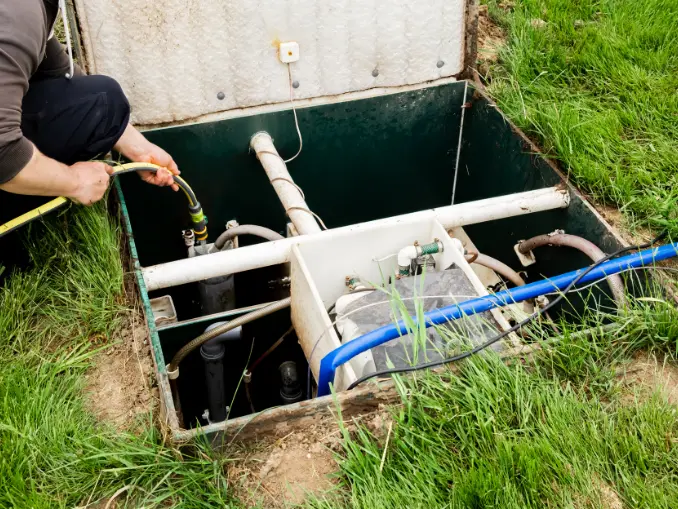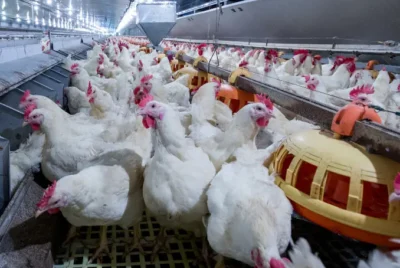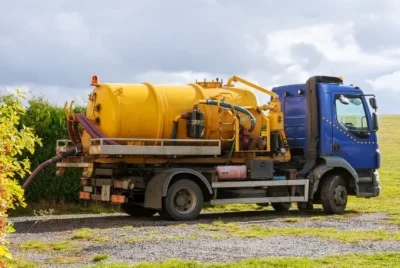Types of Septic Systems: Choosing the Best Option for Your Property
In rural settings or areas lacking access to municipal sewage systems, selecting the right septic system is crucial for property owners. This choice is paramount not only for the efficient management of household wastewater but also for ensuring environmental protection and compliance with local regulations.
For homeowners who also raise chickens or other livestock, the decision becomes even more significant. The presence of animals adds another layer of complexity to waste management, requiring a system that can handle human and animal waste effectively.
So, in this article, we delve into the various types of septic systems available, providing guidance for homeowners to choose the best option for their property and lifestyle.
What is the Purpose of Septic Systems?
Septic systems are essential for disposing and treating wastewater in areas not served by public sewer systems. They are common in rural and suburban areas where municipal sewage systems are unavailable. The purpose of a septic system is to safely treat and dispose of wastewater from household and commercial sources, such as toilets, showers, sinks, and laundry facilities.
Understanding the functionality of septic systems is crucial for homeowners, including those who own chickens or other livestock, as managing all types of waste is important to maintaining a healthy living environment.
Different Types of Septic Systems
Mound Systems
Mound systems are used in challenging conditions, such as shallow soil depths, high groundwater tables, or bedrock close to the surface. In a mound system, effluent from your septic tank is pumped to a man-made mound of sand and gravel, where it is distributed through a network of pipes.
The effluent then filters down through the mound material and into the native soil for further treatment. Mound systems require more space and maintenance than traditional systems but provide a viable option for difficult sites.
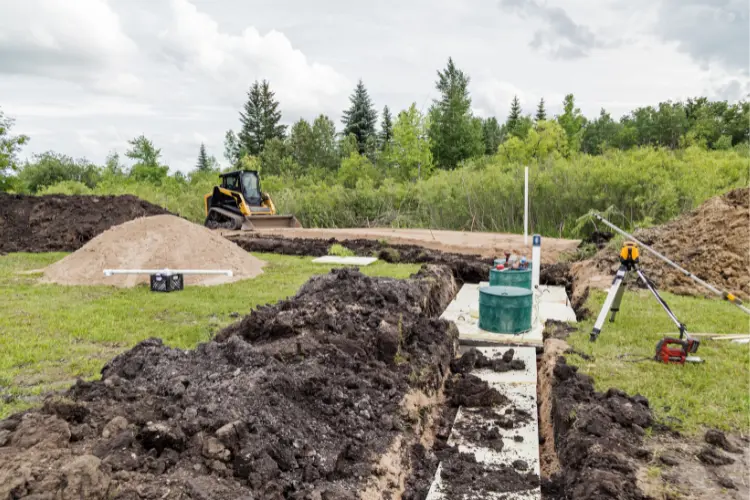
Conventional Anaerobic Septic System
The conventional septic system, consisting of a septic tank and a drain field, is the most common choice for many homeowners. It’s well-suited for properties with ample space and good soil conditions, where the soil can naturally filter and treat wastewater as it percolates through the drain field.
However, for properties with a higher volume of waste—such as those with chicken coops or other livestock—regular maintenance and careful consideration of system capacity are essential to prevent overload and ensure efficient operation.
Evapotranspiration System
The Evapotranspiration System is unique because it relies entirely on the natural processes of evaporation and transpiration to dispose of wastewater. In this system, after preliminary treatment in a septic tank, the effluent is distributed in a special area where it can evaporate or be taken up by plants.
You’ll find this system enclosed by a waterproof liner that prevents the wastewater from percolating into the groundwater. It’s especially suited to arid regions where evaporation rates are high. However, its effectiveness is significantly reduced in rainy or humid climates, requiring a substantial amount of land to operate effectively.
Septic Tank
A septic tank is a significant component of any septic system, serving as the initial receptacle for wastewater from your home. It’s a watertight container buried underground where solids can settle and begin to decompose while lighter substances, like fats and oils, rise to the top.
The liquid effluent in the middle layer exits the tank and moves on to the next treatment stage, such as a drain field or further treatment systems. Regular maintenance, including pumping out the solids, is crucial to prevent system failure.
Recirculating Sand Filter System
A Recirculating Sand Filter System offers excellent effluent treatment by pumping the wastewater through a sand filter. This process provides mechanical and biological filtration, resulting in highly treated effluent suitable for areas with high groundwater levels or close proximity to water bodies.
The system typically includes a septic tank for initial waste separation, a pump tank to recirculate the effluent through the sand filter, and a final discharge area. While it provides superior effluent quality, the system requires more space than a conventional septic tank and drain field and involves higher installation and maintenance costs.
Drip Distribution System
For properties with challenging topographies or shallow soils, drip distribution systems offer a viable solution. These systems use a network of drip lines to evenly distribute treated wastewater across the drainfield, ensuring precise application even in less-than-ideal conditions.
While more complex and potentially costly due to the need for additional components like pumps and timers, drip distribution systems can be particularly effective for properties with mixed-use, such as residential areas combined with chicken farming, by providing targeted, efficient wastewater dispersal.
Chamber System
Chamber systems replace the traditional gravel or stone drainfield with a series of interconnected chambers. These systems are adaptable to various soil types, including those found on properties with livestock. The chamber system’s design facilitates efficient waste treatment and dispersal, even in areas with high groundwater levels or where traditional drainfield materials are not readily available.
Chicken owners might find chamber systems appealing for their ease of installation and robustness in handling fluctuating waste volumes, especially during peak poultry rearing seasons.
Aerobic Treatment Unit (ATU)
Aerobic Treatment Units offer a more advanced solution by introducing oxygen into the wastewater treatment process. This oxygenation supports aerobic bacteria, which more efficiently break down waste than their anaerobic counterparts.
For chicken owners, ATUs present an advantageous option as they can handle higher organic loads more effectively, producing a cleaner effluent that is safer for dispersal in the environment. This system is particularly beneficial for properties with limited space or less-than-ideal soil conditions.
Cluster / Community System
Cluster or Community Systems are centralized systems designed to serve multiple homes or buildings. This system approach can be highly efficient, as it consolidates wastewater treatment in one larger, professionally managed system instead of individual septic systems for each property.
You’ll often find these systems in rural subdivisions, small communities, or areas where individual septic systems are impractical due to space or environmental constraints. Depending on the community’s needs and regulatory requirements, they can use various treatment technologies, from conventional to advanced systems.
Constructed Wetland System
A Constructed Wetland System mimics the natural wastewater treatment processes occurring in wetlands. After passing through a septic tank, the effluent flows into a constructed wetland area where plants, microorganisms, and the media (usually gravel or sand) work together to remove pollutants.
This system is particularly effective for nutrient removal and is suitable for environmentally sensitive areas. Constructed wetlands can be designed to blend with the landscape, offering aesthetic benefits alongside wastewater treatment. Constructed Wetland System require careful planning and design to ensure effectiveness and sustainability but can be cost-effective for rural or suburban settings.
Read also: Septic Tank Alarm System: What Those Sounds Mean for Poultry Owners
How Do You Pick a Septic System?
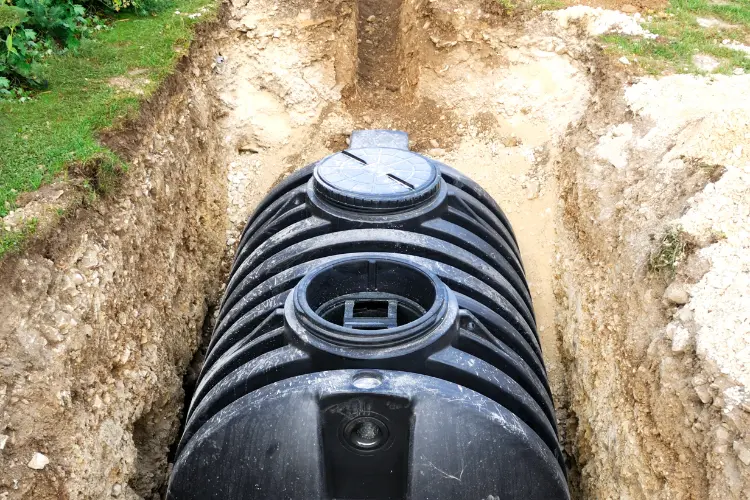
Selecting the right septic system requires carefully assessing your property’s specific conditions, including soil type, property size, and local environmental regulations.
For homeowners, particularly those owning chickens or other livestock, considerations should also extend to managing additional waste and ensuring that the chosen system can handle the increased organic load without compromising efficiency or environmental safety.
Consulting with professionals to understand the nuances of each system type, from conventional to advanced options like aerobic treatment units or constructed wetlands, is crucial.
These professionals can offer guidance on systems that accommodate both household and animal waste, ensuring your septic system is compliant with local regulations and capable of effectively managing the waste generated by your lifestyle, including the specific challenges posed by poultry ownership.

